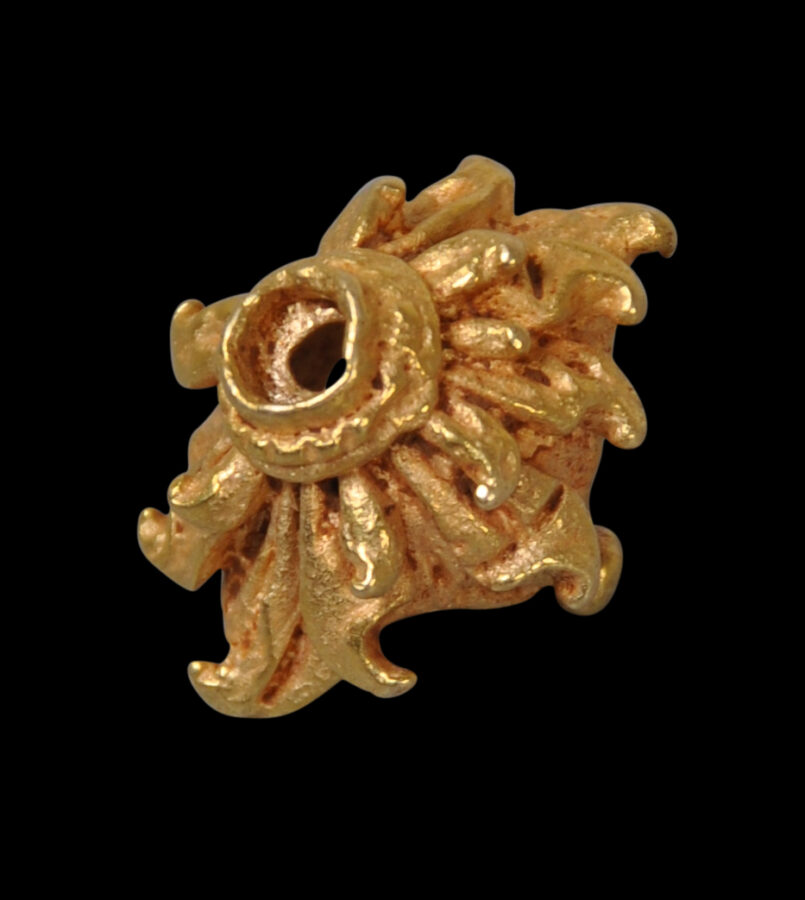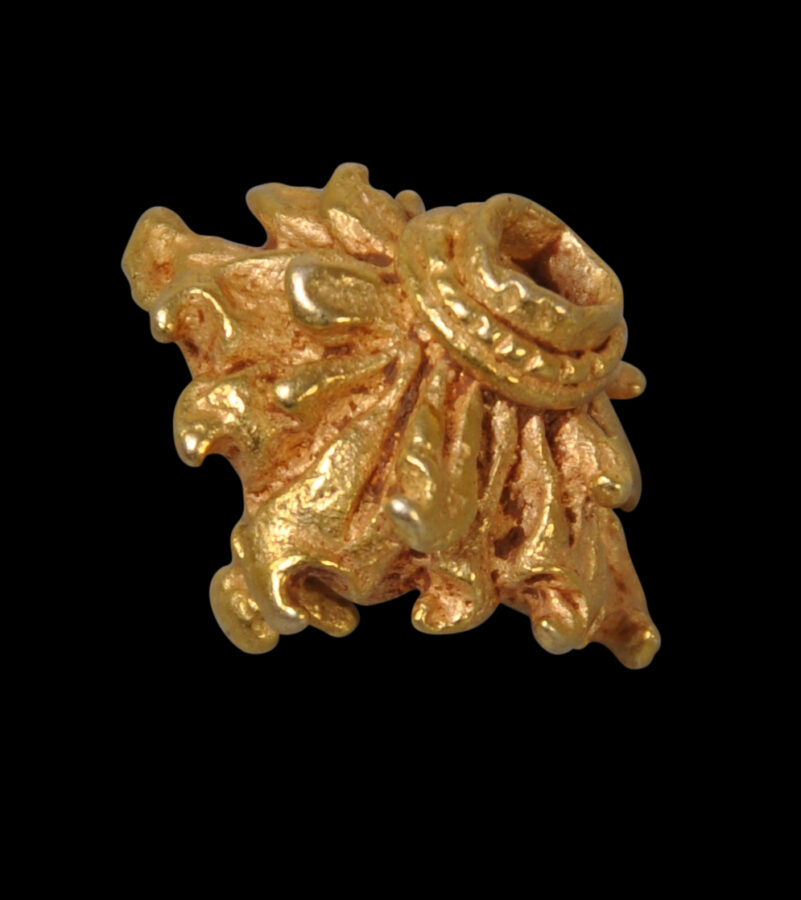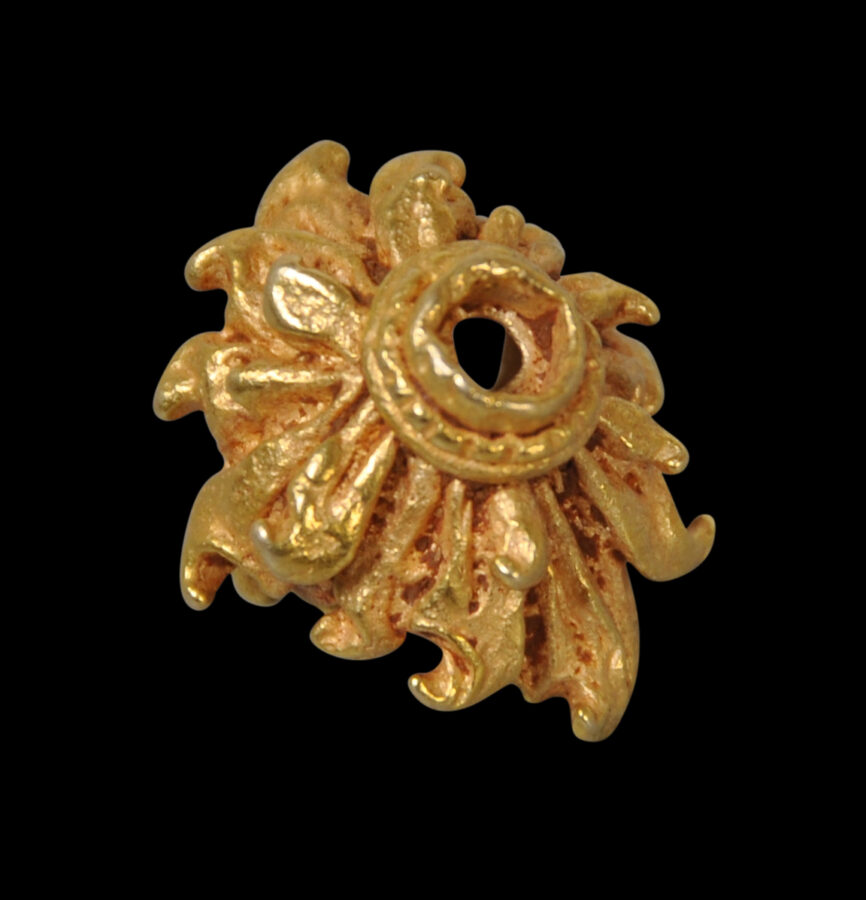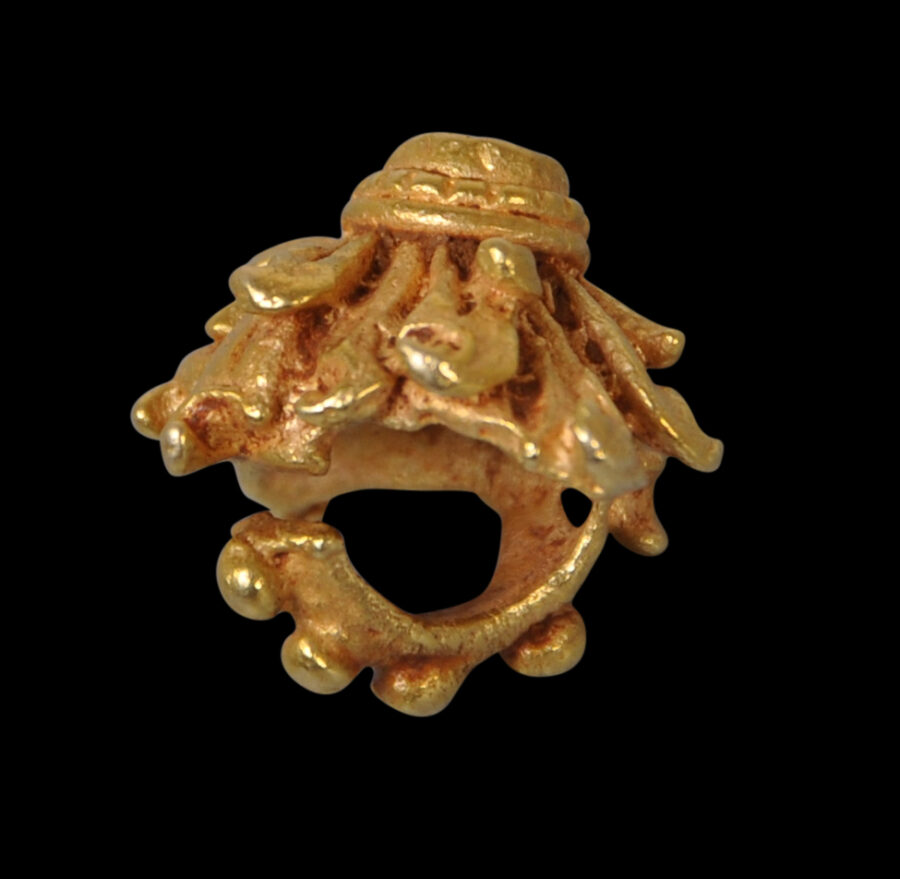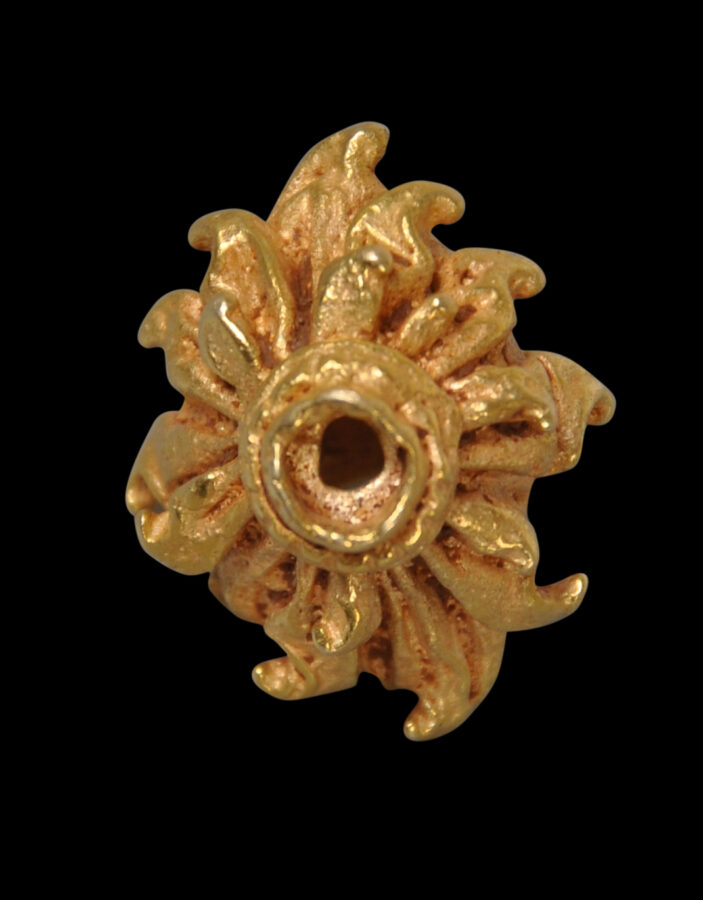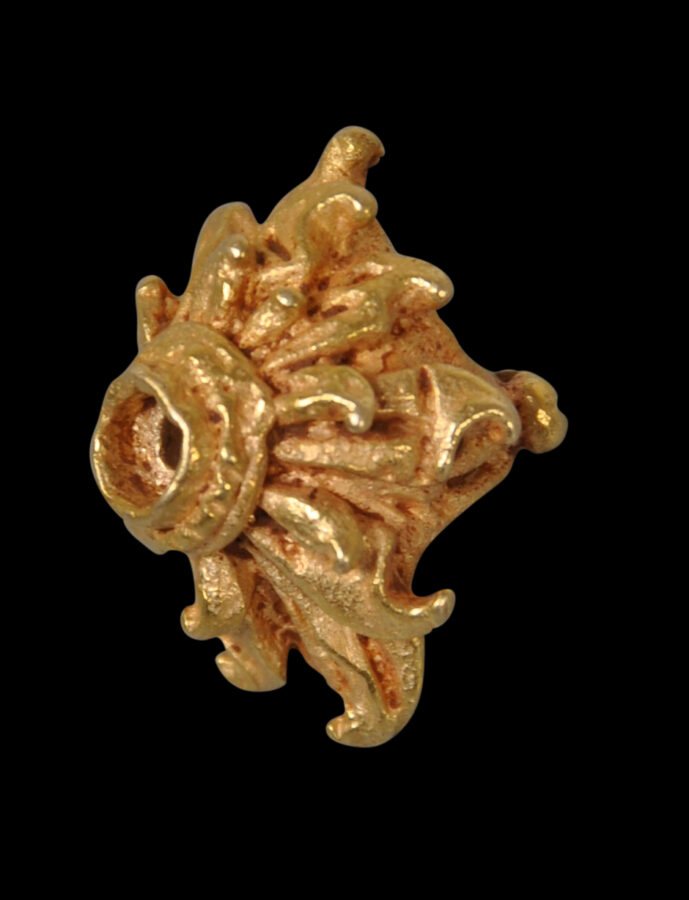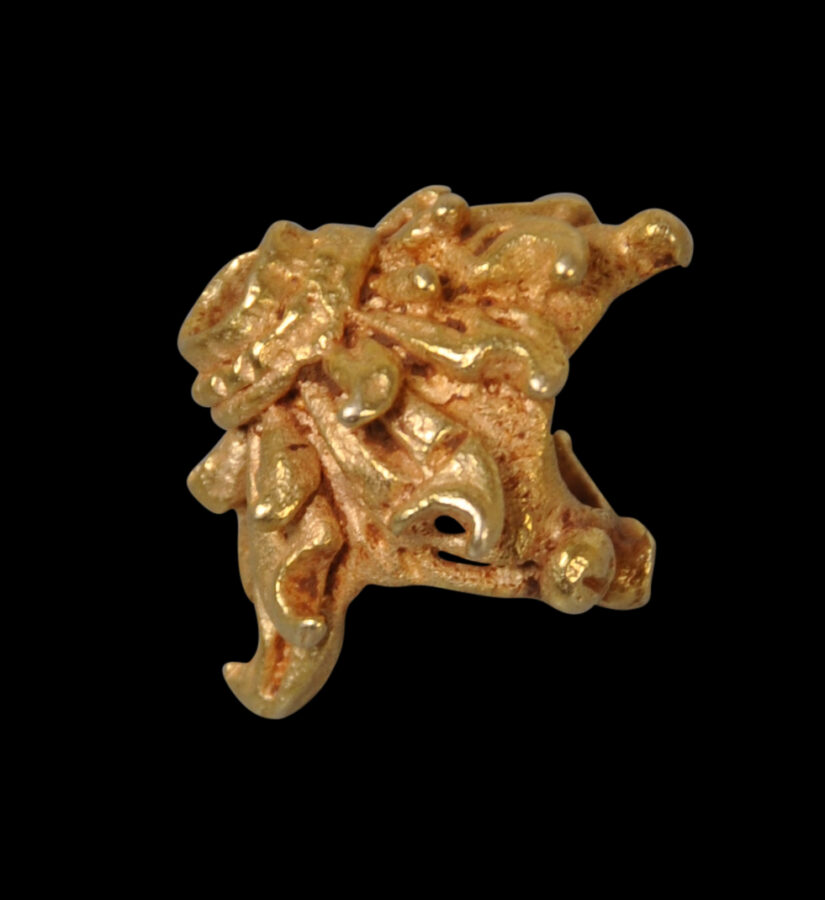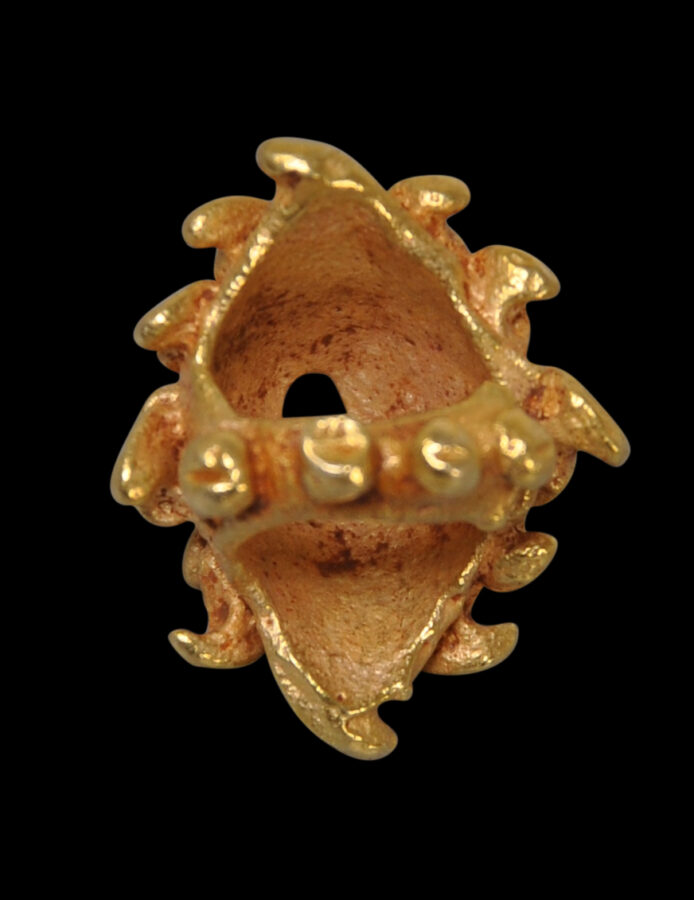Enquiry about object: 8652
Early Javanese Gold Lotus-Form Cord Weight or Gold Ear Ornament
Central Java, Indonesia 8th-9th century
length: 2.5cm, width: 2cm, depth: 2cm, weight: 11g
Provenance
Estate Collection of Tom White MBE, a former UK diplomat who served in Southeast Asia in the 1960s & 1970s.
This lotus-form ornament has been cast using the lost-wax process from solid gold. It is heavy in the hand and if not an ear ornament most likely was intended to serve as a weight for a waist cord – perhaps a Hindu caste cord. The reverse is cast with a small ‘C’ form lug to allow the ornament to be attached.
The lotus has been cast with spiky petals with curling tips. The use of the lotus as a motif accords very much with classical motif preoccupations at the time and is typical of Central Java from the period.
Probably the item was intended to serve as an ear ornament or a cord weight but Miksic (1990) suggests that such items might also has served as ‘rod finials’ perhaps for rods that served some sort of ritual purpose.
Large quantities of gold jewellery and other items have been found in East and Central Java dating from this period. It was a time when Buddhism and Hinduism seems to have peacefully co-existed. Both men and women wore ear ornaments at the time.
This item is in fine condition and has obvious age. Tiny traces of soil are evidence that the ornament was at some time buried.
References
Bremer, S., Goud der Goden: Uitt het oude Java, Wereldmuseum Rotterdam Publishers, 2014.
Miksic, J., Old Javanese Gold, Ideation, 1990.
Polak, J., Ancient Indonesian Gold of the Central and Eastern Javanese Periods 750-1550: A Selection, C. Zwartenkot Art Books, 2022.


